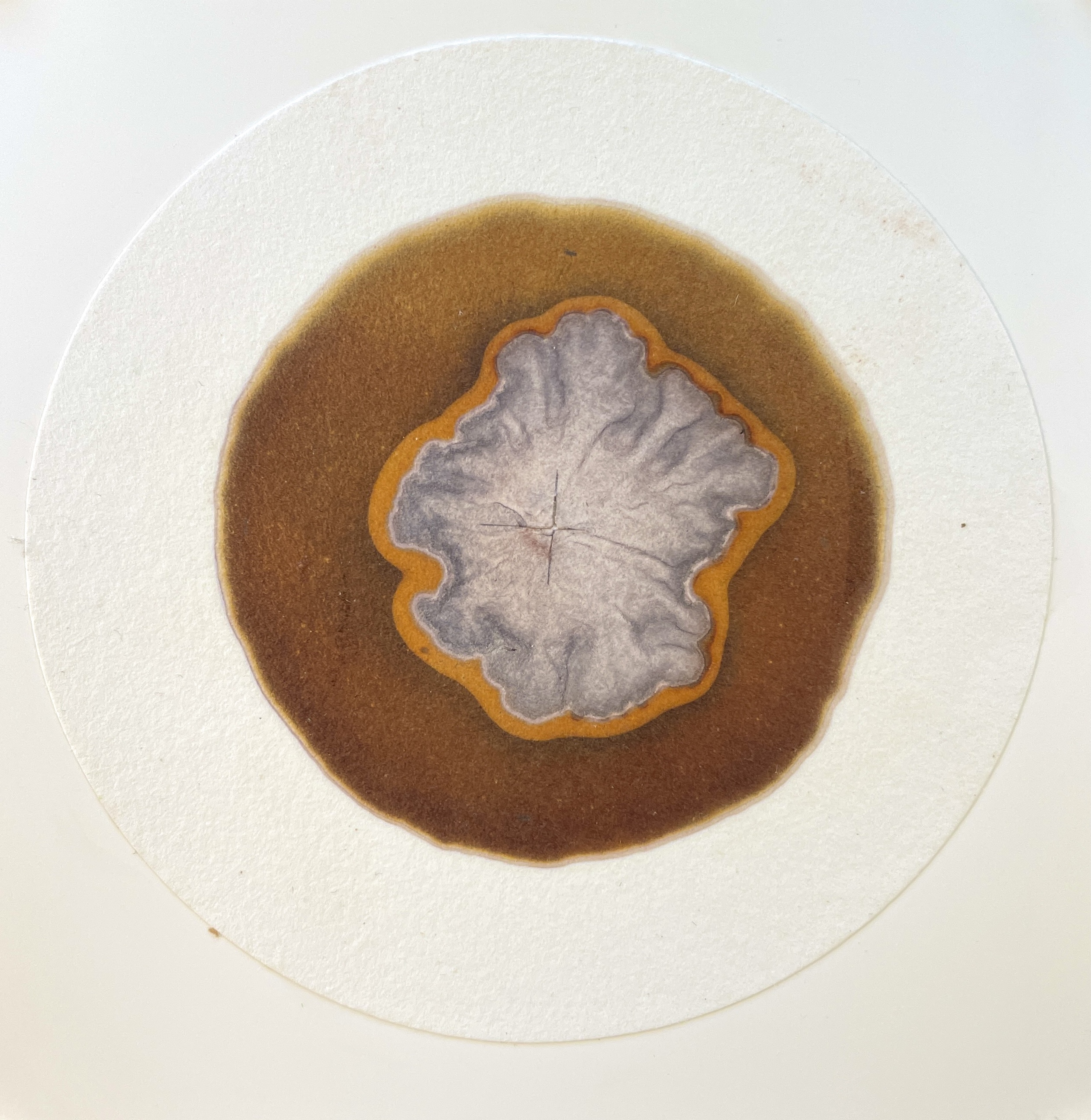Chromatography is the scientific process of separating the components of a mixture. The mixture can be gas, liquid or solid. In these works I have employed the photogenic process used in soil chromatography to study the composition and distribution of organic pigments found in the environment. These pigments are collected seasonally and are emblematic of the change in colors that one encounters.
The organic pigments in these works come from maple leaves, hawthorn leaves, eastern white pine needles, red and green algae collected along the coastline, and green rot fungus.
Each filter paper first absorbs a photosensitive chemical through a tubular filter at the center of the circle. Then after the papers have dried overnight they are ready to absorb the pigments isolated from the environment. Capillary action and diffusion through the fine filaments of the paper create a unique image of the composition of organic compounds in any given mixture. Larger heavier organic molecules emerge in the center, while more mobile smaller molecules disperse rapidly across the paper forming concentric rings and spiraling distortions.









